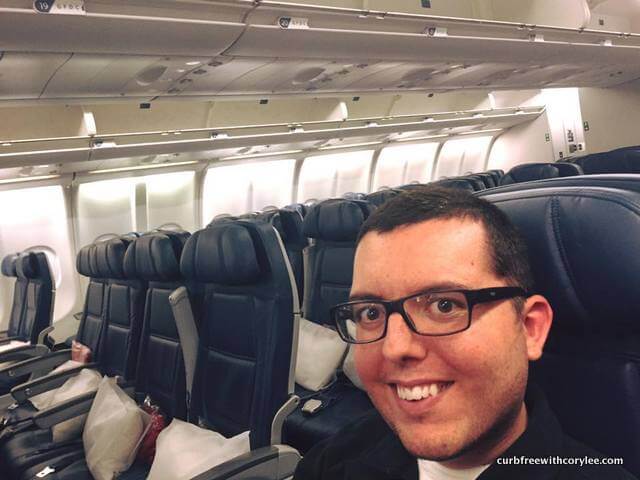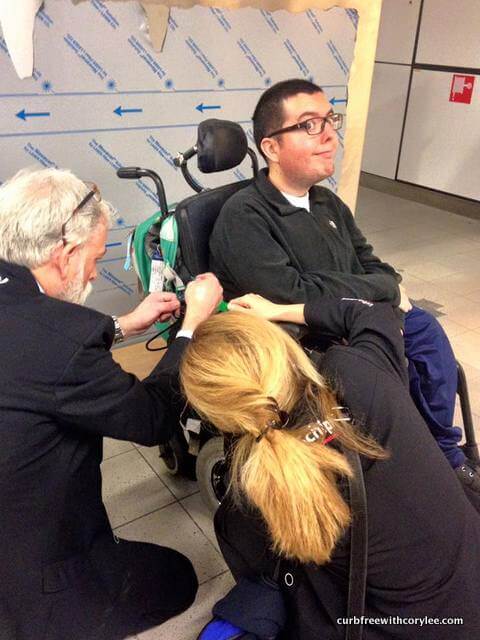If you’re like me, you don’t like something like a wheelchair slowing you down. Whether you’re a world-class traveler or just starting to explore the big blue globe, you can hop on a jet plane and take your chair with you so you don’t miss a beat. There are some things you have to see to first, though. If you don’t take precautions, your wheels can get pretty mangled during the flight – and nothing puts a damper on a trip quite like not being able to get around. Whether you’re in economy or business class, all of these tips are imperative. Check out these tips to help ensure your chair arrives at your destination as safely as you do.
Communication is Key
Notify the airline or charter company ahead of time that you will be bringing your wheelchair on the flight with you. Many airlines have a certain protocol they use and have to make preparations. By communicating with the right people in advance, you’re letting them have time to do their job and take care of things on their end. (Note: At this time, you should also mention the battery if your chair is electric. Some airlines require a special container for the battery during the flight, depending on what type of battery it is, and you may receive special instructions from the crew.)

Clear communication can lead to a happy flight like this.
Instructions are Important
Put a sign on the back of your wheelchair with instructions for the crew. Ideally, you should include one set in English and a second one in the native language of your destination. Include how the pieces fit together (if they have to be broken down), how to turn on and off a powered chair, how to put it in manual, and anything else you think might be tricky for someone not familiar with your particular chair.
Break It Down
Whenever possible, take smaller parts of your wheelchair with you in a separate carry-on bag. This can include things like the headrest, footrest, joystick, batteries, or anything that’s small enough to fit in your bag. The fewer attachments left on the chair, the less it can be damaged. It’s also a good idea to put your name on each of the components, just as a precaution.
Confirm Communication
Call the airline 24 hours prior to your flight to confirm they have you down as traveling with a wheelchair. The person you spoke with might have been as sweet as pie when you called the first time, but communication lines do break down and the next person in the chain of command might have dropped the ball. Make sure the crew is aware and confirm any special instructions from them as to what you have to take care of on your end of things.
Arrive Early
Yeah yeah, I know you pretty much already have to call and get prepared days before your flight leaves but you’ll be doing yourself a favor if you give yourself an extra hour on top of the already required 2-3 hour early arrival. That bit of extra time allows you to check your chair at the boarding gate and reconfirm any special instructions. Also remind the crew at that time that you wish to have your chair brought to you at the next gate. Double-check that your chair and all its components are clearly marked with your flight information and your name.
Layout Leisure
By having your wheelchair brought to you at the next gate for a layover, you’re allowing yourself the freedom to get around and to check on the safety of your chair. Having the chair removed from and placed back into the plane means several pairs of eyes are on it and making sure it’s not being shoved in the back behind other items. It’s a win-win situation – you get to do a chair check and you get to explore the duty-free shops! Make sure you allow yourself enough time for unboarding and re-boarding though, which can take up to ninety minutes in the larger airports, regardless of which fare class you’re in.

Follow these tips and maybe you won’t get stuck repairing your chair during a layover, like I did.
Other Tips for Traveling with Chairs
It’s far too easy to blow off a “check up” on your chair and tell yourself it will all be just fine. Ask yourself this though: Do you really want to be in unfamiliar territory and be in need of a wheelchair repair shop? Of course not! So schedule a “wellness exam” for your wheels and make sure everything is in proper working order before you grab the next red eye. If you’re handy and know your chair inside and out, you can even pick up a basic tool kit for minor repairs like damaged tires. These kits are typically small and can be easily packed away without taking up much room. By doing so, you can potentially save yourself time and money – both of which are extremely important when traveling. Oh, and another good idea is to look ahead of time at locations of repair shops where you’ll be staying. Hopefully you won’t need one but as they say, better safe than sorry!
*For more in-depth information about flying with a chair, check out my eBook “Air Travel for Wheelchair Users”







